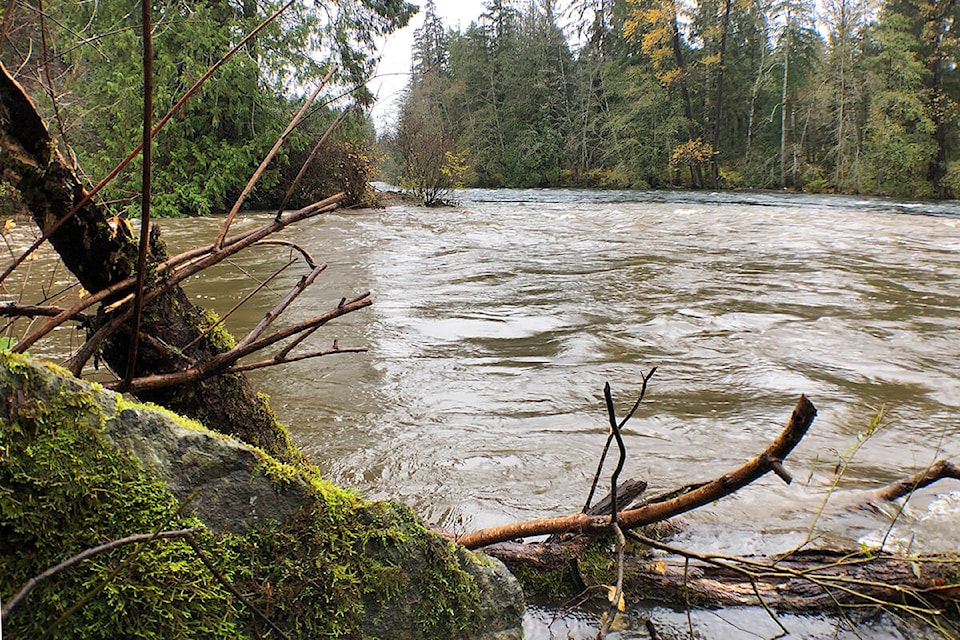BC Hydro issued a public safety advisory to stay away from Elk Falls Canyon and the Campbell River beginning tonight (Nov. 4) through Nov. 15 due to high river flows.
Temporary safety signage will be in place along the river by Friday (Nov. 5).
It has been much wetter than normal since mid-September with more storms forecasted through this week and potentially into next week, BC Hydro spokesperson Stephen Watson says in a statement. Precipitation has been relatively constant and temperatures have been mild. Water inflows into the Campbell River system for the month of October were about 184 per cent of normal. On Oct. 25 there was an an hourly peak inflow rate of 650 cubic metres per second (m3/s), which would fill an Olympic-sized swimming pool in less than four seconds. That flow rate was eclipsed early Thursday morning with an hourly peak of 680 m3/s.
The Upper Campbell Reservoir/Buttle Lake is currently at 219.35 metres and rising. The reservoir level has moved up nearly three metres over the past number of weeks. The reservoir operates between 212 metres to 220.5 metres, although there is a flood buffer zone to 222 metres, and BC Hydro prefers not to enter that zone as it would mean high downstream river flows.
About 80 per cent of the water storage in the system is within this reservoir behind the Strathcona Dam. Downstream at the Lower Campbell Reservoir/McIvor Lake, which is held back by the Ladore Dam, the reservoir level is currently at 177.65 metres. This reservoir may operate between 174 metres and 178.5 metres.
“We are passing water through the three dams and powerhouses on the hydroelectric system and the John Hart powerhouse has been operating at full electricity generation,” Watson says. “We are passing about 128 m3/s of water flow down the Campbell River, with 4 m3/s of that being the minimum fish habitat flow down Elk Falls Canyon.
“Our hydrologists are forecasting a daily average of about 400 m3/s coming into the system from yesterday (Nov. 3) through tomorrow and then decline to Monday. There is considerable variability in the forecast as to how wet next week may be.
The preference during storm season, out of consideration of fish habitat and gravels within the canyon and the river, is to spill a smaller amount of water over a longer period of time. The Elk Falls Canyon flow will increase to 100 m3/s Thursday night. Over the next two weeks the total water discharge down the Campbell River from the John Hart facilities may range from 144 m3/s to 224 m3/s.
People can view Elk Falls from the safety of the suspension bridge.
The Upper Campbell Reservoir/Buttle Lake may still rise over the next few days depending on actual water inflows.
“We generally prefer to have the Upper Campbell Reservoir/Buttle Lake to be below 219.5 metres during storm season to have water storage capability and full downstream flood risk management considerations, such as reducing discharges during high tides,” Watson says. “This is early in the storm season to be near this level. If the forecast changes significantly over the next two weeks we will issue another operational update.”
RELATED: BC Hydro alerts Campbell River residents to siren test
RELATED: Increased water flows planned for the Campbell River system in coming weeks
